
Painting “Confucius Fair”. Confucius – the ancient Chinese philosopher, thinker, teacher of life. In his comprehensive doctrine, he diligently resurrected lost traditions and linked customs, morality, politics, religion and other aspects of social life into a single system of being.
In the tradition, he saw a healthy start, which contains a deep symbolic meaning of all the achievements. In Confucianism, culture is the highest form of religion, both as a result of human creations and as the embodiment of the great Path of the universe.
For Confucius, true service to Heaven is expressed in service to people. “The preacher of pure life” together with his disciples formed an unprecedented community of people, a kind of spiritual brotherhood, existing according to the secular laws and instructions of the Teacher.
“Confucius was supposed to move the exile from place to place. And his wandering chariot was set up in the temple along with his writings and musical instruments. Not a miracle, because the same community lies at the heart of Confucius’s teachings. Recall his teachings:” If the hearts of mortal then the whole world will be like one family. All people will represent in themselves one person, and all things, because of the surprising mutual order and union, will seem to be one and the same being. We must love others as ourselves, therefore we must desire for them all that we desire for ourselves. “
Disappointed with the social and political system of his time, Confucius traveled to various Chinese princedoms in the hope of convincing the rulers to use his teachings to establish peace and social harmony. Confucius spent 14 years traveling, and upon returning home he devoted his life to enlightening ordinary people. And only a few centuries after his death, the rulers of the Han dynasty accepted his theories as principles of governing the country.
In the picture, Confucius is not a conditional character, but a hero endowed with recognizable features and a certain psychological state. Roerich paints him according to the memoirs of his contemporaries and in the tradition of writing a Chinese portrait. Master Kuhn’s face had large features: big eyes, a fleshy nose with wide nostrils, an upturned upper lip, thick hanging eyebrows and a long beard. The Roerichian hero recognizes the characteristic features of the appearance of Confucius, but his image, full of sacrifice and moral asceticism, carries tragic notes.
Roerich with great skill executed a landscape stylized in the spirit of Chinese painting. He brings us to the atmosphere of the ancient Chinese kingdom, along the roads of which the great sage traveled.
Two hieroglyphs, clearly bred by Roerich on the wagon of Confucius, draw attention to themselves. Both of these signs are read as “shows” and are meaningful wishes, that is, they can be translated as “longevity.” These hieroglyphs are often used in China as an ornament when decorating architectural structures and decorating fabrics.
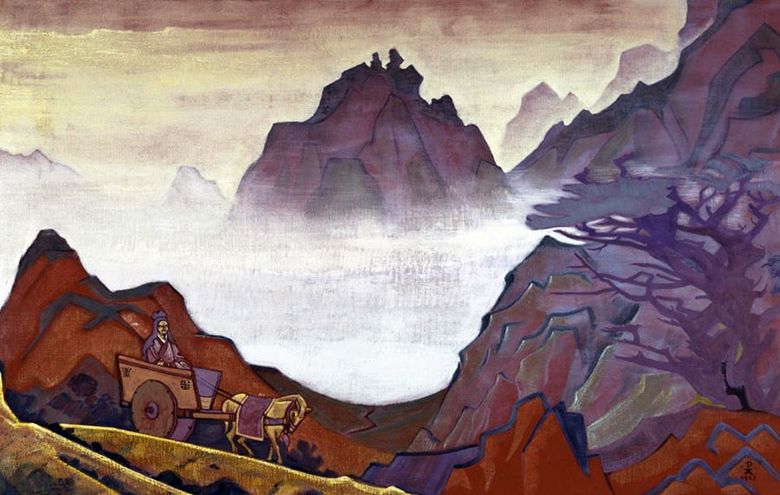 Confucius le Juste – Nicholas Roerich
Confucius le Juste – Nicholas Roerich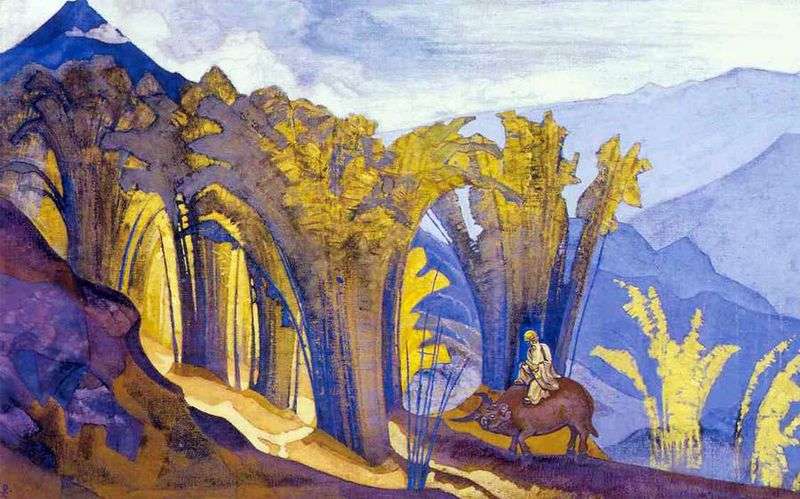 Lao Tse by Nicholas Roerich
Lao Tse by Nicholas Roerich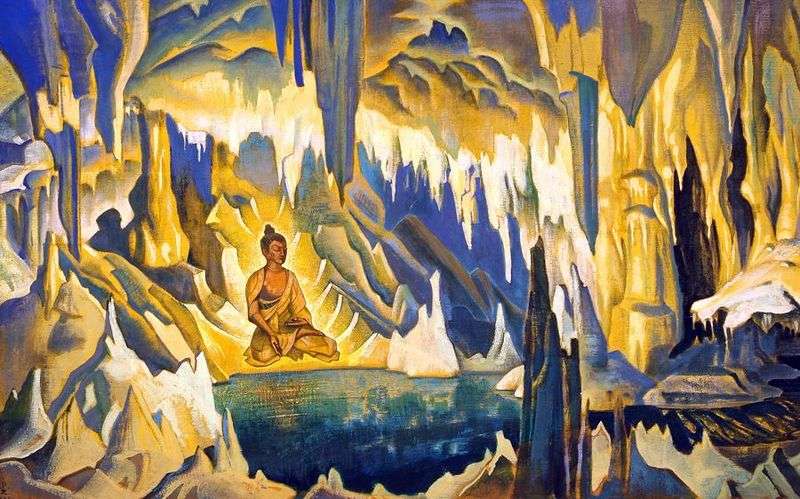 Buddha winner by Nicholas Roerich
Buddha winner by Nicholas Roerich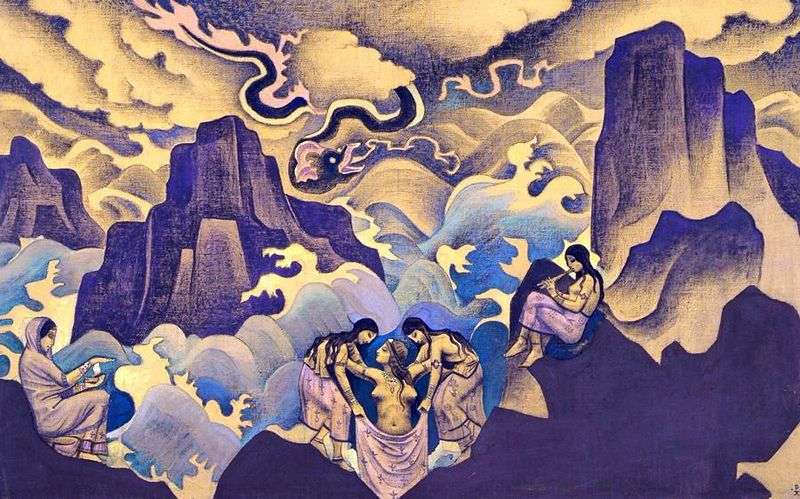 Ancient Serpent by Nicholas Roerich
Ancient Serpent by Nicholas Roerich Sarakha by The Blessed Arrow – Nicholas Roerich
Sarakha by The Blessed Arrow – Nicholas Roerich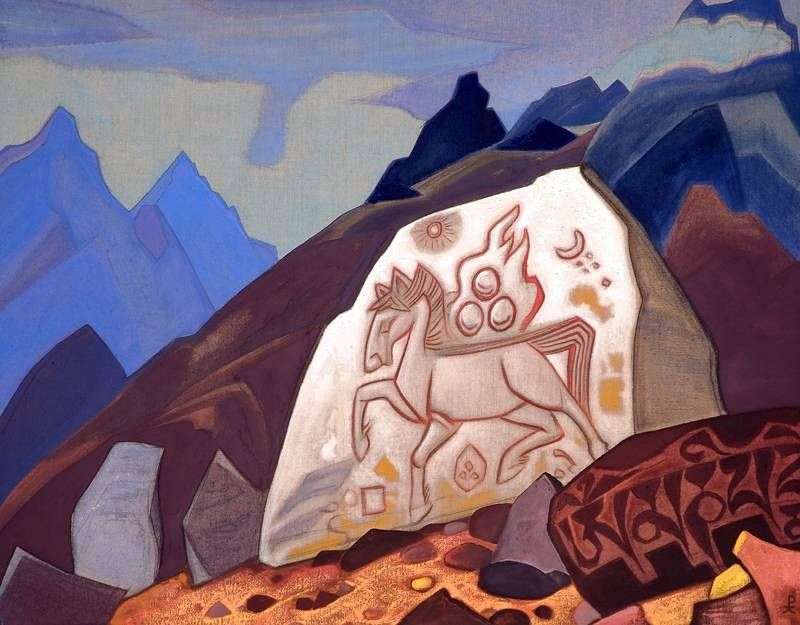 White Stone by Nicholas Roerich
White Stone by Nicholas Roerich Padma Sambgava by Nicholas Roerich
Padma Sambgava by Nicholas Roerich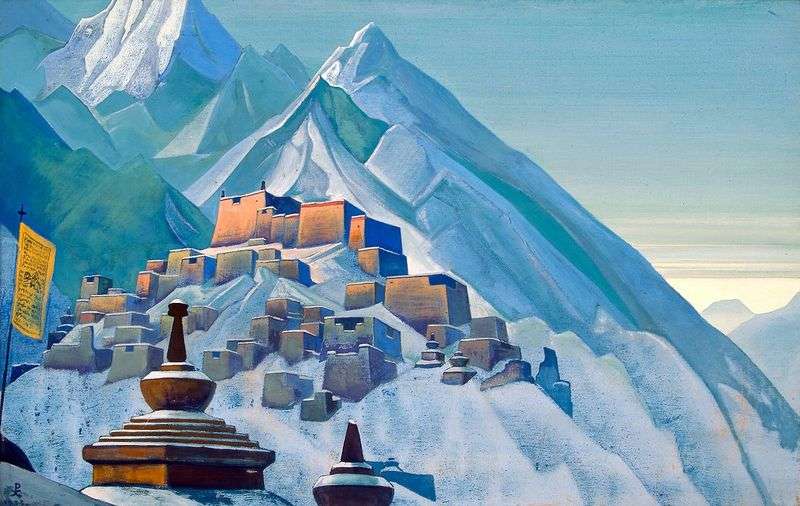 Tibet. Himalayas by Nicholas Roerich
Tibet. Himalayas by Nicholas Roerich